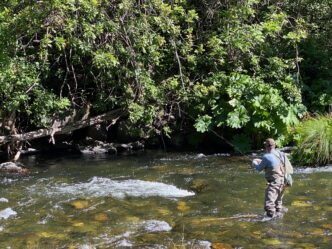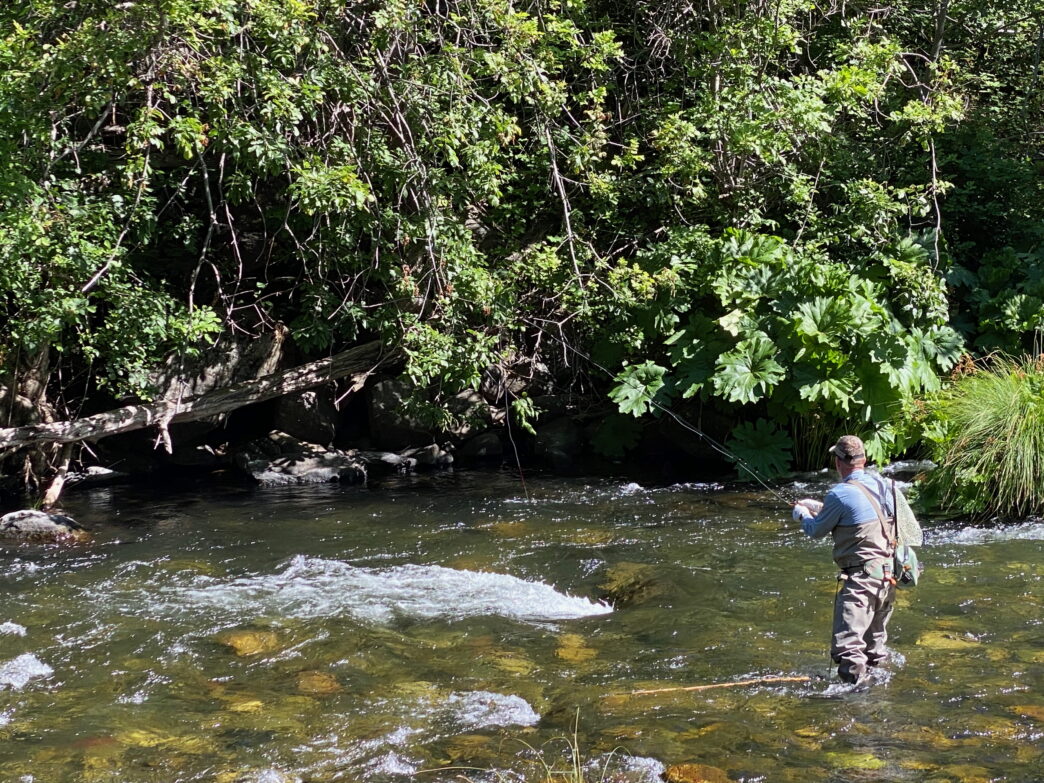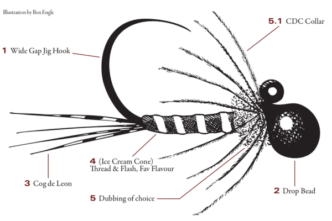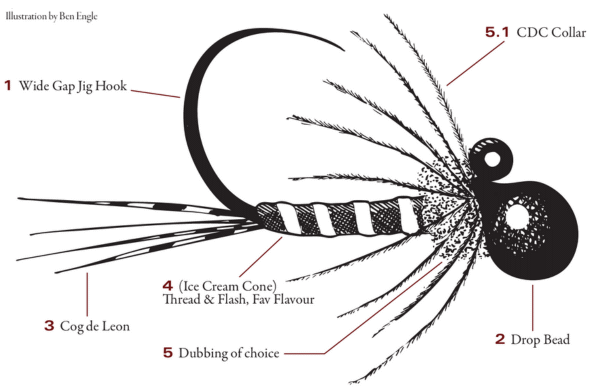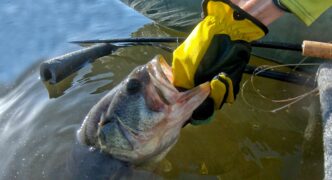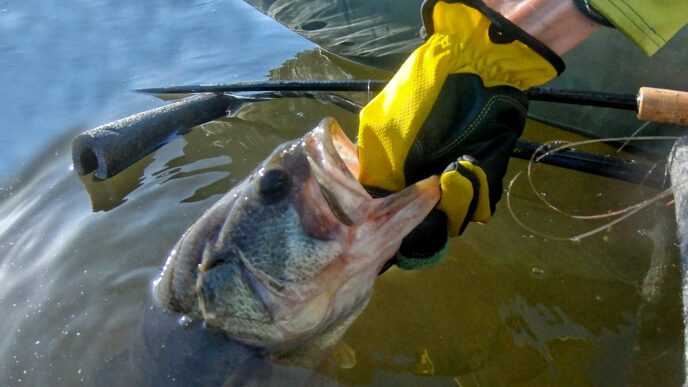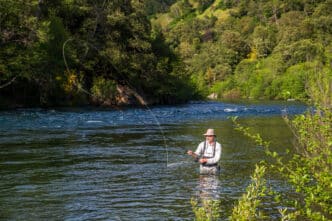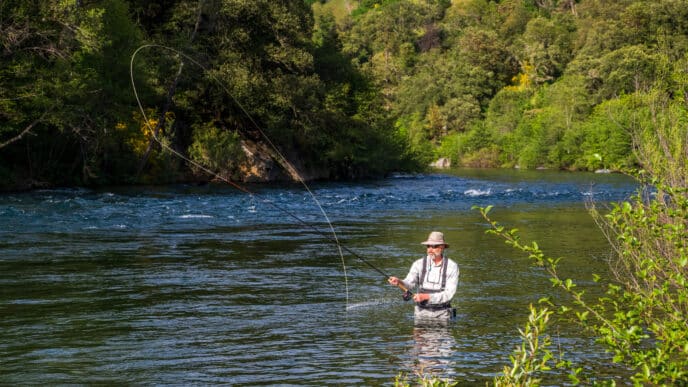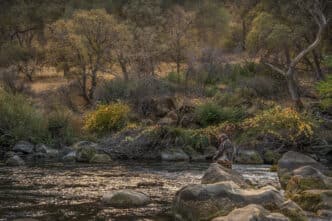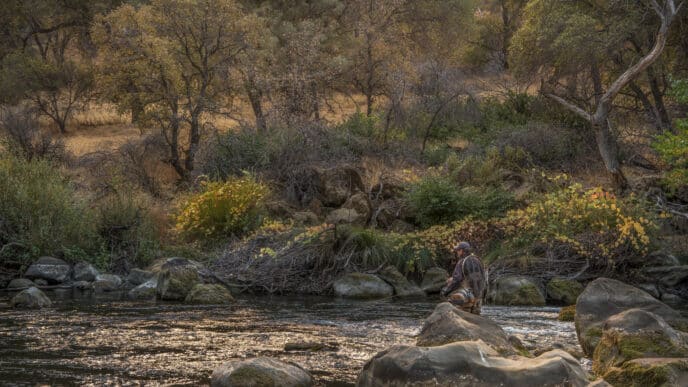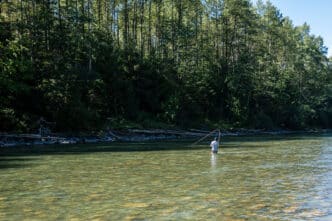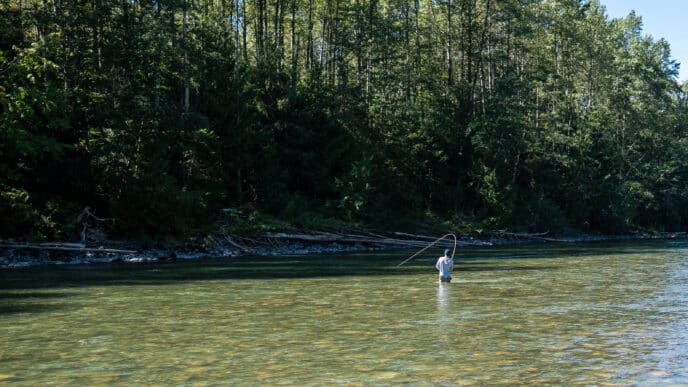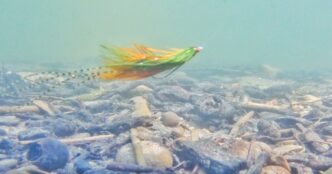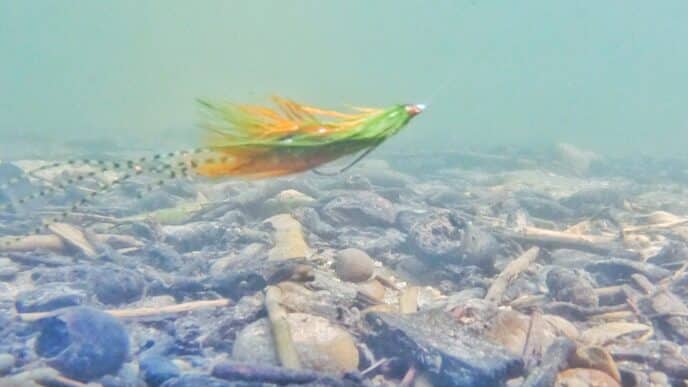We have heard about them over the last two decades: Polish nymphing, Czech nymphing, French nymphing, Spanish nymphing, tight line nymphing, and now Euro nymphing. Based on questions at my Euro clinics and presentations, all the naming is often more confusing than helpful. To help simplify things, I will try to clarify how these different techniques have evolved into what we now generally call Euro nymphing.
When I arrived in California 20+ years ago from Europe, my fly-fishing experience was limited to casting homemade streamers for northern pike on small canals surrounded by dairy cows. I had never heard about nymphing of any kind. The dominant nymphing style in the U.S. was and probably still is the indicator and split shot setup, and this became my go-to nymphing technique for the first few years. This can be a deadly technique, but it is far from perfect.
During a fly-fishing classroom clinic taught by Californian legend Ralph Cutter he showed us underwater footage of multiple trout quickly taking and spitting out a fly in the same run without the indicator showing any signs of a bite. That was an eye-opener and the catalyst for me to start exploring, testing, and trying new techniques. Years of trial and error, building rods, tying flies, and trying different leaders and sighters followed.
It’s true that many locally known and unknown anglers experimented with different nymphing techniques years before we started Euro nymphing. Well-known here in California is the Ted Fay style, which he learned from Ted Towendolly (or Tauhindauli, see also Eric Palmer’s article in California Fly Fisher, April 2015). Stop by the fly shop in Dunsmuir, and you’ll still find weighted ‘Black Bomber’ flies in the fly bins. You should try your luck out on the Upper Sac at the nearby Tauhindauli park.
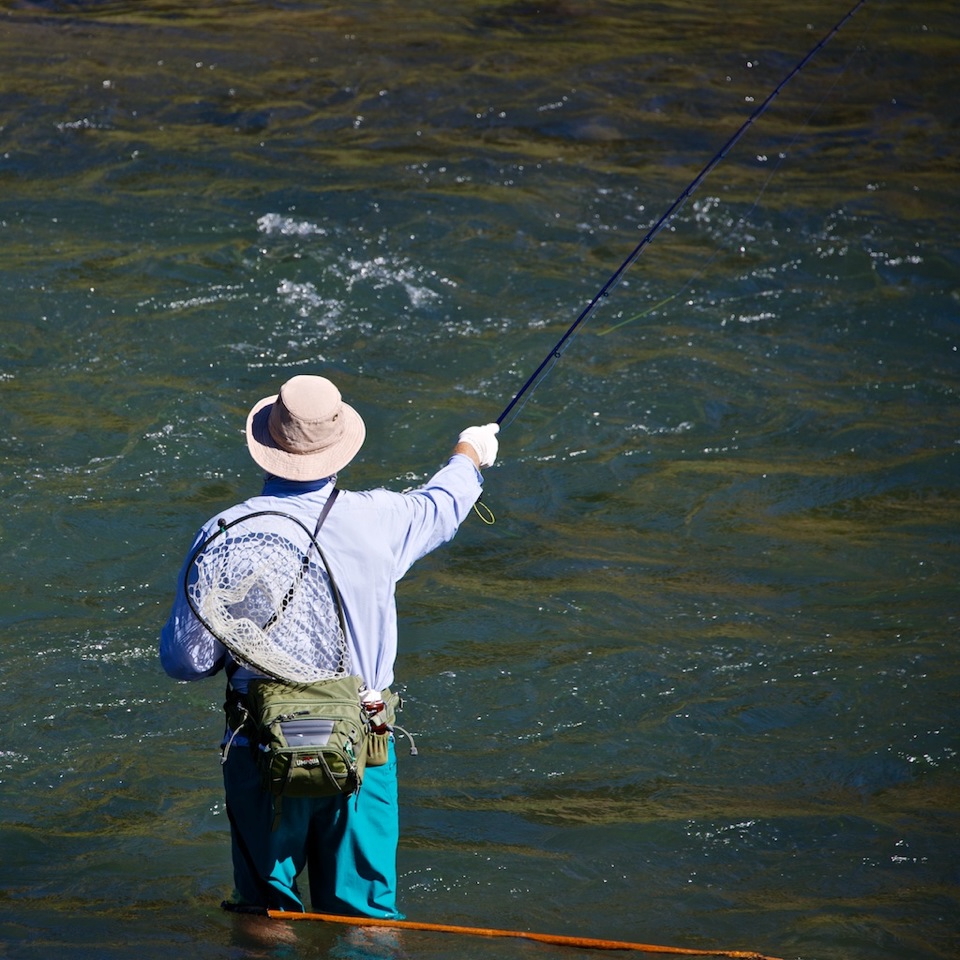
COMPETITIVE FLY FISHING
To understand why we now have Euro nymphing, we must look at the competitive fly-fishing world. The Fédération Internationale de Peche Sportive Mouche (FIPS-Mouche) is the international organization (Fips-Mouche.com) that annually organizes the World Fly Fishing Championships. Although competitive fishing appeals only to a small number of the best fly fishermen, this competitive environment is where most of today’s improvements and developments come from including needle point barbless hooks, longer rods, and tippet rings, to specialized sighter materials, paint markers, and mainstream items like tungsten beads. The evolution to what we now call Euro nymphing also started in this competitive world.
THE START: POLISH NYMPHING
In 1989, the world championships were held in Kuusamo, Finland. It was the year the Berlin Wall came down and Eastern Europe began opening up. During that competition, a son of a Polish farmer competed for the Polish national team and fished an unconventional style that he had learned from his father, and that style would change the fly-fishing competitions forever.
He was using a regular fly rod with a regular fly line. There would only be two to three feet of fly line out of his rod tip. Attached to that was a leader that was about two-thirds of the length of his rod. At the end of this setup, he would tie one or two (with dropper tag) heavily weighted flies. With a flick of the wrist, those flies would be ‘lobbed’ upstream. After the flies hit the water, they would sink fast to the bottom, and from that moment, he would lead or pull them slightly faster than the current through the drift with a stretched arm and a horizontal rod position.
As he had a direct connection with his flies, he would be in contact with them throughout the entire drift and would feel every bite. This fly fisherman was Vladi Trzebenia. He became the individual world champion that year by a landslide, and the Polish team also became world champions. This ‘new’ style he used was called ‘Polish Nymphing’ after that. Years later, after his competitive career, Vladi became a coach for the U.S.A. fly fishing team and helped promote his successful style here. Flies he developed and used like the ‘Polish Woven nymph’ and the ‘Vladi worm’ (aka condom worm) are still successful today.
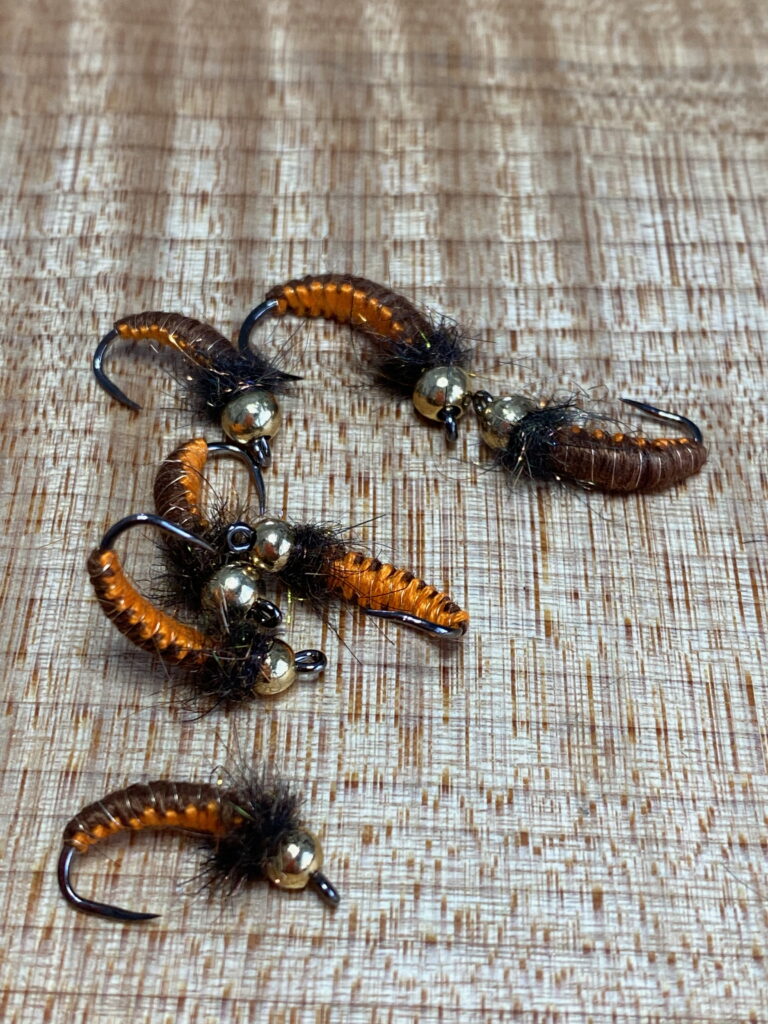
CZECH NYMPHING
While some countries and anglers attributed their success (or lack thereof) to the new and unknown flies, it was the Czech team that embraced this new style of fishing early on and further developed and marketed it in the years following the Polish success. The Czechs made modifications and created many new Czech nymph-style patterns, incorporating bright-colored sections at the end of the fly line for improved visibility. They won several world championships in the years after the Polish won, and renamed the style as ‘Czech Nymphing.’
The Czech and Polish nymphing techniques are very similar. Both are short-line tactics that use traditional fly lines with a short leader. The arm and rod are stretched horizontally or slightly raised (no high sticking) to reach further, and the drifts are very short. As you fish only a rod and arm’s length away, they work best in situations where you can get close to the fish without spooking them. This means most of the time, fast-moving water that is not too deep (up to three feet) and that allows the heavy flies to reach the bottom before the drift is over. While originally developed for grayling, it works as well on any trout stream with these conditions.
The shortcomings of the short line techniques become very clear when the conditions do not allow you to get close to the fish. To fish further away and be in contact with your flies, you must lift your rod tip and get more line out. The weight of the fly line now starts working against you. If you lift your rod too high, the weight of the line can pull your flies out of the water as your line falls back to you through the eyelets of your rod. If you have enough line out to prevent this, the weight of the fly line creates a big arc that drags your flies unnaturally through the water.
FRENCH NYMPHING
On clear, slow, or shallow rivers in the Pyrenees and other areas, the short line approach is at a disadvantage because you spook the fish. It was the French national team that introduced a completely new nymphing technique on those rivers, which became highly successful and formed the basis for most modern nymphing styles.
Instead of using a regular fly line and leader, they began using very long, tapered leaders, 20 feet or longer. The fly line would stay on the reel. At the end of this long leader, they would knot a bright colored section of mono or coiled mono as a sighter before the tippet section. The heavy Polish and Czech nymphs were replaced with nymphs that would be smaller and lighter. These nymphs, often called Frenchies, incorporated fluorescent hotspots and beads to entice the fish. Positioned directly downstream from the fish, you cast this tapered leader delicately upstream. The rod tip is held high, and during the downstream drift, you retrieve the slack and either hold the sighter above the surface or float the sighter section on the surface to detect any bites. In a span of nine years, the French national team became a six-time world champion, twice second, and once third. This long, tapered-leader style was subsequently labeled ‘French Nymphing.’
SPANISH NYMPHING
On the other side of the Pyrenees, the Spanish also had a lot of experience with skittish trout. Small, fast-sinking Perdigon-style flies are their favorites in those situations. They modified the French rigs and eliminated the taper. They used thin, long leaders that were made from straight monofilament. Thinner is better as it has less sag, resulting in better drifts and better strike detection. The biggest downside is the lack of taper makes it harder to cast. It’s the weight of the flies that you are casting. Belgium casts, combined with lighter rods and softer tips, make casting the light flies on straight leaders possible. And yes, they became world champions, and the straight long mono leader style was named ‘Spanish Nymphing.’
EURO NYMPHING
What the short line styles of the Polish and Czechs and the long leader styles of the French and Spanish all have in common is that they put you in direct contact with the fly, and they were all developed by European anglers in competition fly fishing. Contact nymphing or tight line nymphing are sometimes used as synonyms, but it is the Euro name that seems to sound and stick the best. While any one of the styles can be called Euro nymphing, the current Euro developments in rods, flies, and rigging are all based on the long leader techniques.
TRY IT
It is easy to add the Euro approach to your current set of skills, and you can probably start doing this with the gear you already own. Whether you are a ‘tug is the drug’ swinger, a dry fly fanatic, or a classic indicator fisherman, it’s fun to try and learn a new skill on days when those techniques don’t work for you.
Specialized Euro rods, lines, and reels are fantastic and definitely worth the investment when you are mastering your skills, but not necessary to get started. As you don’t use fly line and the reel is not more than a storage device, any reel and any fly line will work. Longer rods are an advantage, but any rod nine feet or longer that is a 6-weight or lighter is a good starting point. What’s left is the leader.
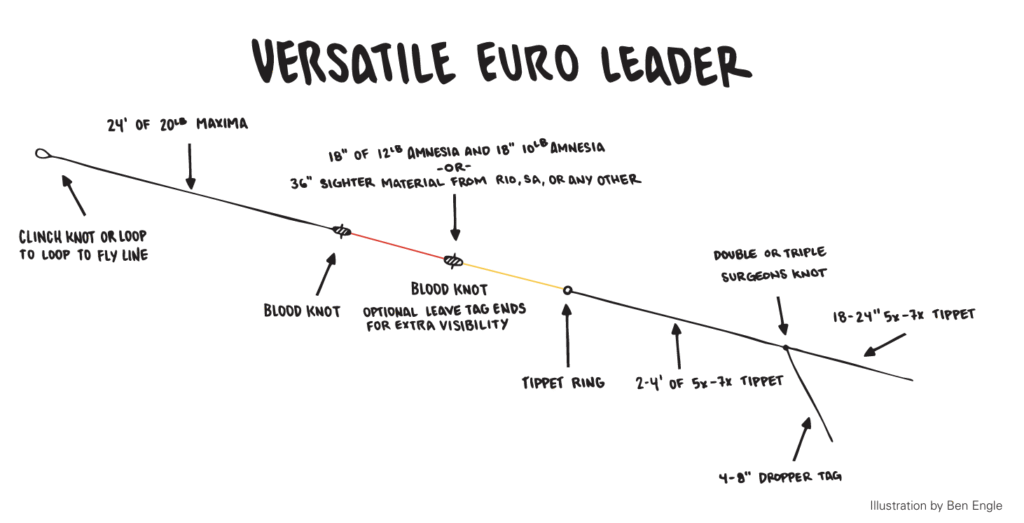
Three key elements of a Euro leader
- Long: All the line out of the rod tip and in your guides is straight monofilament
- Sighter: Highly visible piece of line to detect strikes and manage the depth of your rig
- No taper: Straight leader and straight tippet to your flies
There are many leader formulas around, and this is just one of them, but one that can be easily made with two materials from your fly shop for less than $20. This is a versatile Euro leader recipe and a great starting point. It can be used to cast tiny nymphs up-and-across as well as the more classic, heavier nymphs on the short line style. It is significantly lighter than your regular fly line, yet you can still cast it like a fly line and become accustomed to casting lighter leaders. Just make sure to stretch the whole leader well before you start.
Pick up a spool of Maxima Chameleon or substitute and a spool of sighter tippet or Amnesia, and you are good to go. Once you become comfortable casting this leader, you can go thinner; the pros and cons of that will be explored in another article. Make one, put one in your vest or bag, and try it out the next time. Keep a tight line and guide your flies with the sighter out of the water at a 20-to-45-degree angle. Enjoy fishing waters you otherwise pass by and be surprised by the fish you catch.



